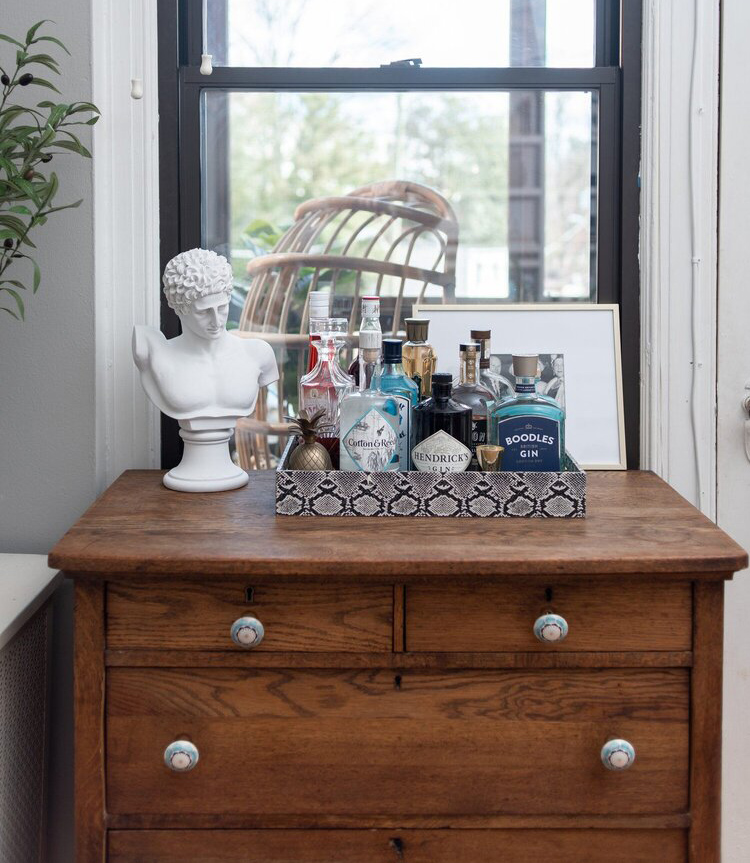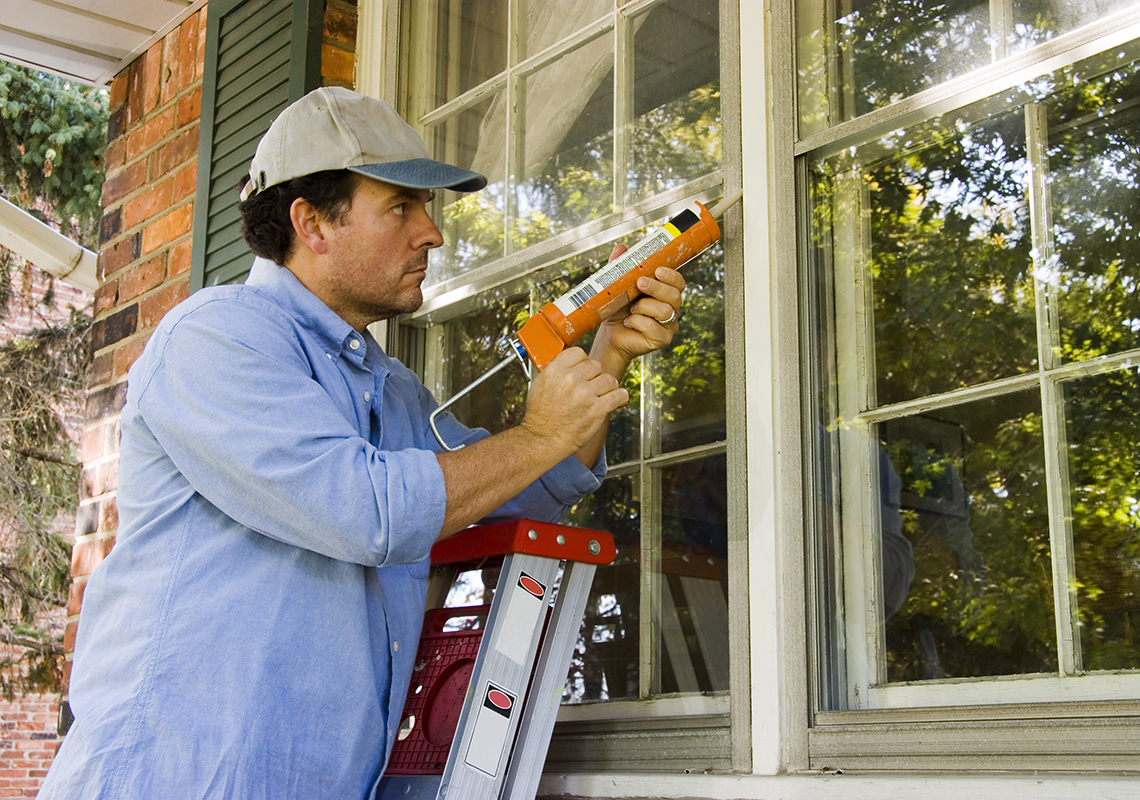Let’s Get Moving! Expert Tips To Smooth the Journey Home

THE Team from Town & Country Movers joins us this week for tips on a smooth move.
Moving can be the most stressful part of buying or selling a home, but it doesn’t have to be.
The spring market is one of the busiest times for everyone associated with real estate, with Realtors® and their clients managing many different aspects of a sale or rental and interacting with many different vendors along the way. And given that the typical homeowner stays in their property for about 12 years, it’s not unusual to have questions about how to prepare for a major but infrequent life event: moving.
At Town & Country Movers, we understand the stress that comes with relocating and we believe that a smooth and stress-free move starts with a plan and the right team to help you get things moving. We’re a local, family-owned business that has been providing clients concierge-level service throughout DC, Maryland, and Virginia since 1977 and we’ve learned a lot over the years about the best strategies to get folks settled into their new homes.
If you’re planning a move to a new home either locally or out of the region, here’s what to think about as you vet and choose the professional moving company that’s right for you.
Local Moving: How to Select a Mover
From a couple of local college kids with a truck to nationally-recognized brands, you have many options for who will handle your move so it’s important to know what to look for as you’re researching moving companies. Start first with their experience and expertise:
- Are the crews full-time, professional movers? You’ll want to know that they have dedicated personnel who have had background checks, and who will arrive on time and fully staffed so not a minute is wasted in getting your household packed up. Find out if there is a point-person on site that you can communicate with to ensure all logistics are covered.
- Are they experienced in moving specialty items? If you have an impressive art collection, uniquely-sized furniture, or large items like a piano, make sure you choose a mover who has the right equipment to deliver these items safely.
- Do they offer packing assistance? This is time-consuming work and requires extraordinary care to ensure your goods are delivered safely to their destination. Save yourself time by choosing a mover who includes packing assistance in their services, at the very least for your breakable items. It will be money well spent!
Speaking of money well-spent, ask how your mover about their fees and how they are paid:
- Is a deposit required? Clarify upfront whether the company requires a deposit before the move, and if so, what their payment terms are. Legitimate movers will provide you with a clear, written estimate, which includes the total cost and any upfront deposit required.
- What is the pricing structure? Do they charge by weight, distance, time, materials, or is it a flat fee? Get a breakdown of all potential charges so that you aren’t surprised by additional fees like disassembling/assembling furniture, using stairs, or specialized handling.
- What forms of payment do they take? Reputable movers will be set up for credit card payments, but some may offer discounts for cash. Remember that some moving expenses are tax-deductible so you’ll want to get receipts for all payments.
And while experienced movers will take every precaution to ensure the careful handling of goods, accidents happen. Find out early what the company will do to compensate you if the worst-case scenario happens:
- What happens if there’s damage? Ensure that the moving company has liability coverage and clear policies for handling any potential damages to your belongings during transit. Movers may also provide you with worksheets to help you value your items for insurance purposes. This guide from the Department of Transportation offers statistics and other tips to keep in mind.
Long-Distance Moving: What You Need to Know
In addition to all the questions listed above, a long-distance move requires a bit more investigation and logistics. Here’s what to consider:
- Does the company manage your move from start to finish? Ask if the company provides end-to-end service, or if your belongings will be transferred to a different company or a different truck during the move.
- What are the delivery terms? Understand when and how your belongings will be delivered. Will your items arrive in one trip, or will they be stored temporarily at a facility?
- Who assists on delivery? Ensure that the company uses trained, professional movers at the delivery location. It’s also important that any movers assisting with the unloading have had background checks for your safety and peace of mind.
- How is the long-distance move priced? Long-distance movers may charge based on weight, distance, and packing requirements so get a clear estimate based on the specifics of your move.
- Will you have a single point of contact throughout the move? A moving company with a dedicated point of contact makes communication easier and ensures you’re always in the loop.
Why Choose THE Team, Town & Country Movers?
At Town & Country Movers, we believe in providing concierge-level service that makes your move as easy and stress-free as possible. Our team is composed of three women with nearly 35 years of combined experience in the moving industry. We pride ourselves on offering one point of contact from the very first call to the final unloading of your belongings.

Amy, Sarah, and Errin
Town & Country Movers, Inc.
703-216-1977 direct
THETeam@townandcountrymovers.com
Visit corcoranmce.com to search listings for sale in Washington, D.C., Maryland, Virginia, and West Virginia.
Don’t miss a post! Get the latest local guides and neighborhood news straight to your inbox!
The Importance of an Emergency Fund When Planning on Buying a Home

By Bill Stern, Branch Manager for CMG Home Loans
Saving for your home doesn’t end with a down payment.
If you’re looking to buy a home, do you have an emergency fund? If you’re like many prospective first-time home buyers, this question may have sent a chill of anxiety down your spine.
You’re not alone. This is a big financial regret for many, but especially for Gen Zers and Millennials, who, according to CNBC, feel “not saving enough for emergencies ranks at the top of their lists.”
But don’t worry! We’re here to provide you with helpful information about emergency funds and calm any homeowning anxieties you may have, ensuring that your homeownership journey is a successful one.
A Safety Net for the Unexpected
It’s not just good to be prepared for the worst, it’s essential. What if you’ve just moved into your house using all of your savings, only for a tree to smash through your roof a week later — how can you afford the repairs? An emergency fund is exactly what you need in these unpredictable, money-leeching scenarios. Your back-up savings account is the bread and butter of happy homeownership, like a friend you can always count on in an emergency.
Other New Home Repair Woes
Aside from a tree crashing on your roof, the unexpected “joys” of homeownership can have a funny habit of making themselves known within the first few months of moving into your dream home. The furnace might be on its last leg and you might’ve moved in right before winter. Or you may have to deal with a closet collapsing, a leaking garage roof, water damage in your crawlspace, a malfunctioning defrost tube in your fridge, or perhaps your water stops working in general, leading you to fully replace your well pump and pressure tank.
If you’re not a handy person, you’ll pay a sizeable amount to professionals to patch together the home you just spent a big down payment to buy. An emergency fund can help assuage your anxieties and take care of these unforeseen circumstances.
Offset Income Loss or Unemployment
Career changes and unexpected unemployment are an unfortunate possibility. Whether it’s a reduction in your work hours or a companywide lay-off, an emergency fund can serve as another type of safety net. You’ll want to save enough money to cover your monthly mortgage payments and other household essentials.
How Much Should I Save?
This general rule of thumb suggests 3-6 months of basic living expenses to set aside. However, once you hit that goal, don’t stop setting aside money. Keep contributing a set amount from each paycheck every month just in case. Our loan professionals can help customize your own emergency fund strategy by evaluating your income and lifestyle so that you have a better understanding of how much is enough for your unique situation. You can jumpstart the process by setting a household budget, which doesn’t have to be overly complicated; here’s one from Nerd Wallet that works for nearly every type of household at any income level.
Avoid High-Interest Debt
Because many don’t have an emergency fund before they become homeowners, people often have to turn to high-interest credit cards to cover those unexpected costs. Having your safety cushion means that you don’t have to accumulate high-interest fees and can avoid a nasty cycle of debt, keeping both your credit score and financial health intact.
Set Realistic Goals
The idea of starting an emergency fund may seem daunting, but it doesn’t have to be. You can start small and set realistic savings goals, increasing these goals as you achieve them. You can easily set up automatic transfers from your checking account to your savings account. It’s all about making saving money a habit.
It’s important that you move into your new home with a solid financial foundation and a boosted peace of mind. Reach out to our CMG financial advisors today for more tips on preparing yourself for homeownership and setting yourself up for success.

Bill Stern, Branch Manager | NMLS ID# 267577
CMG Home Loans | NMLS ID# 1820
540-222-0164 | Website | Email Me
Notice: This is an advertisement and is not a commitment to lend. Contact a loan officer today to explore the financing options specific to each borrower.
Sprucing up the Home with Chic Spring Finds

Spring is in the air, and while there are plenty of ways to outfit your home for the season, we’re focusing on keeping our eyes peeled for long-lasting, versatile pieces that will make your space look chic, not cheesy. You can display these finds all throughout the year, if you wish, and best of all, they’re available from local retailers throughout the DMV.

Photo courtesy of Tuckernuck
What’s a gathering without gorgeous dinnerware? Instantly add a touch of spring to your tabletop with these dessert plates, which feature some of our favorite pastel hues of the season.

Photo courtesy of Tuckernuck
If you’re ready to start hosting outside, then opt for these cute melamine plates that are perfect for the grandmillennial. They’re kiddie-proof, too!

Photo courtesy of Salt & Sundry
Bring some green into your living room with this cheerful throw pillow that leans nice and contemporary. Measuring 30 inches long, it’s nice and sizable. It would look beautiful on a bed as well.

Photo courtesy of Red Orchard
Jazz up the powder room with this darling bird print that’s great for small spaces. At just 6 by 6 inches, it would look sweet on a bookshelf as well.

Photo courtesy of Red Barn Mercantile
Celebrate the start of gardening season with this oh-so-adorable tea towel that will add a splash of pep to your kitchen. It makes for a fantastic hostess gift, too, so grab one for a friend and wrap it around a bottle of wine!

Photo courtesy of The Blue House
April showers bring May flowers, and these floral tea lights will simply bring good vibes to your next dinner party, whether it’s held indoors or out. They’re sure to be the talk of all of your guests.

Photos courtesy of The Opportunity Shop
Last but not least, don’t forget to work some vintage pieces into the mix. This gorgeous blue vase is ideal for holding your latest clippings, while a classic Herend hors d’oeuvres dish is sure to make a statement on your coffee table when friends stop by.

Sarah Lyon is a New York City-based freelance writer, originally from Bethesda, MD. She contributes to a number of national design and lifestyle publications like Architectural Digest, Apartment Therapy, MyDomaine, the Washington Post, and more. Sarah also works with designers to help them style spaces for photo shoots. Find more shelfies on her Instagram page, @sarahlyon9
Don’t miss a post! Get the latest local guides and neighborhood news straight to your inbox!
Mixing Vintage and Modern in the Home

Most design enthusiasts will agree that you can never go wrong fusing together vintage and modern pieces in the home. As we begin 2024, it’s normal to want to refresh your space now that the holiday décor is put away, and what better way to do so than by mixing in some secondhand finds? Below, we’re sharing a few tips to keep in mind when combining styles.
Buy at Least One Vintage Piece of Large Furniture
Whether you’re fortunate enough to have inherited some heirloom pieces from relatives or simply enjoy shopping for your own vintage pieces while at antique stores and flea markets, don’t be shy about pairing these items alongside your more contemporary furnishings. For example, consider styling your sectional sofa with a vintage marble coffee table to add a touch of grandeur to the living room. Rather than tucking your barware inside a kitchen cabinet, set up an entertaining ready display by turning a small wooden chest into a bar cart of sorts. Display liquor bottles and decanters on a chic tray, and use the drawers to house table linens, coasters, and other serving essentials. One-of-a-kind pieces will ensure that your home feels unique and true to your personality rather than appearing cookie-cutter.

Don’t Be Threatened By a Bit of Patina
If you come across pieces with patina, don’t fret—a bit of wear is what makes secondhand pieces so special; they truly tell a story. Homes that solely feature brand-new, sleek furnishings can come across as a bit stark so don’t shy away from incorporating some character.
Delicately Pair Old and New Like a Pro
To ensure that your home appears stylish without resembling an antique shop, be intentional in mixing old and new. For example, remove a pair of antique prints from their original frames and take them to Framebridge, where you can select an on-trend frame that is sophisticated, not stuffy. Pair a set of vintage nightstands with a contemporary bed frame so that your sleep space appears well-curated, not dingy.

Style Your Built-ins With Vintage Finds
Do your living room built-ins need a bit of a refresh? Instead of shopping for all brand-new objects to display, go the vintage route for a more curated look. Style favorite novels and coffee table books along with small trinkets that speak to you while you’re out thrifting, exploring antique shops, or traveling. Instead of purchasing bookends or storage boxes from major online retailers, search for one-of-a-kind pieces that serve the same function. Note that you can think outside the box a bit here, too, when determining what to display. For example, that vintage vase you came across last year deserves a place in the spotlight. Remove it from the depths of your dining room hutch and place it on top of a stack of books so that it can shine.
You won’t regret incorporating vintage items into your home. For one, this is an environmentally friendly practice, and second, many will argue that older items were simply made better. That 100-year-old dresser you received from your grandparents may easily have another 100 years (or more!) left in it; the furniture of yesterday was truly built for the long haul. Happy hunting!

Sarah Lyon is a New York City-based freelance writer, originally from Bethesda, MD. She contributes to a number of national design and lifestyle publications like Architectural Digest, Apartment Therapy, MyDomaine, the Washington Post, and more. Sarah also works with designers to help them style spaces for photo shoots. Find more shelfies on her Instagram page, @sarahlyon9
Don’t miss a post! Get the latest local guides and neighborhood news straight to your inbox!
7 Steps to Home Ownership for Veterans and Military Personnel

Written by: Jackie Waters
Active military personnel move often, and buying new homes in areas of reassignment tends to be part of the job. Once you’ve fulfilled your military service obligation, purchasing a home to settle in may be one of your top goals. Here’s a guide to help you through the process.
McEnearney Associates can help you find that perfect home. Call our office today at 877-624-9322!
Reduce Debt and Improve Your Credit Score
Focus on high-interest debts first; these include credit card debt and payday loans. Any loan with an interest rate greater than 8% may stand in the way of a good mortgage loan. Don’t use credit, steadily reduce your debt load, and keep an eye on your credit score.
Look for Programs That Help You
There are a number of programs designed to help veterans find the home they’re looking for. So, when you begin the house-hunting process, look into programs like U.S. Military on the Move, which joins forces real estate companies (including McEnearney Associates) to give credits or rebates to veterans looking to buy a home. You can learn more about this program by clicking here.
Save Aggressively
As you work on eliminating debt, put the same energy into saving. Try one of these aggressive savings strategies:
- CD laddering allows you to take advantage of the higher annual percentage yields of long-term CDs without committing money for several years at a time.
- Gradually increase the percentage of your income that you put toward savings. Even a 1% increase can help you raise your savings. Be intentional about reducing expenses, especially any “wasteful” or spontaneous spending.
- Reframe your thinking about consumerism and spending money. You may be handing over valuable funds without thinking much about it.
Get Pre-Approved
Secure loan pre-approval. This means your finances and other qualifications have been reviewed. The process also helps you understand how much a home you can afford and what interest rate you should expect.
Choose Your Loan Type
A VA loan has several benefits, including the lack of requirement for a down payment or a monthly mortgage insurance amount. Additionally, the credit requirements for the VA loan are more flexible than those for other loans. There are other options as well, such as Federal Housing Administration loans, down payment assistance programs, and the Specially Adapted Housing grant.
Veterans can also look into VA 30-year fixed mortgage loans, which require no down payment and low interest rates. Though the rates are subject to change, today’s rate (which is based on the purchase of a single-family primary residence in IL) is 3.106% with no discount points, a middle credit score of 680 and the assumption that the loan will have an escrow account, according to Rate.com.
No matter which type of loan you opt for, it’s important to carefully consider certain vital details. Learn mortgage language to negotiate a good contract:
- Mortgage interest rates are determined by many factors, including county and state, the size of the down payment, the duration of the loan, and its type.
- The annual percentage rate on your loan is how much you will pay for the loan. The APR is the cost of borrowing money.
- The term of the mortgage is how long you’ll take to repay the loan. Remember that the longer you take to pay off the debt, the more you will pay in interest.
- Projected payments are the estimated amount you’ll pay each month with your mortgage payment and mortgage insurance combined.
Find Your Home
The natural fifth step is finding your dream home, within your realistic home budget. Create a list of the things your new home must have, such as proximity to great schools, a positive location, size of the home, or amenities such as central air conditioning. Make a list of other things you don’t mind compromising on, such as multiple garages. A real estate agent can offer valuable resources and information, such as the best time of year to buy a home and how to negotiate costs.
Close and Move In
With the help of the realtor, your final step is closing on the home. This includes settling on a good offer, completing paperwork, and paying relevant fees. After your hard work, this moment should be very satisfying.
Approach the purchase of a new home with the same patience and attention you devoted to other missions during your military career. Stay on course, stick to your priorities, and keep your eye on the end goal.
Author
Jackie Waters is a mother of four boys, and lives on a farm in Oregon. She is passionate about providing a healthy and happy home for her family, and aims to provide advice for others on how to do the same with her site Hyper-Tidy.com.
Don’t miss a post! Get the latest local guides and neighborhood news straight to your inbox!
Pest & Plant, The Art of Attraction


Author: Matthew Zuccari, TLC Design
As we begin to shake off what will hopefully be the last of a wet, snowy season, days are becoming longer and warmer, the buds are breaking on trees, and blooms are unfolding from their winter retreats. Along with all these beautiful natural forerunners of spring come some not-so-welcome changes as well – especially the return of awakening home and garden pests. Just as we humans become more active and energized during these sunny days of early spring, all types of ants, aphids, mosquitos, and other bugs are as well. Being less welcome than most other guests in the house, homeowners will often select the most effective, readily available solution to get rid of their pest problems; usually this includes harmful chemical compounds that require careful contained use to avoid a laundry list of dangerous adverse effects.
However, for those of us who enjoy spending time in our property’s greenspaces, solutions for spring pests may be as simple as some inspired planting options. There are many plants that can be incorporated into the landscape that offer pest-repellent properties. Most pesticides on the market will feature plant-based oils or chemicals in their extensive ingredient lists, therefore, it makes sense to utilize these benefits directly from the source. However, most homeowners do not have an extensive enough pest problem to dedicate their whole garden solely to plants with repellent properties. It is my suggestion that homeowners looking to add pest-repellant plant material to their property make their selections based on one of the following two properties: Would they like plants to be culinary or cosmetic?
Some of the plants best at repelling pests from your property are equally at home in the pantry as they are in the garden. For seasoning lamb, I recommend a few sprigs of rosemary as a garnish. For repelling snails, slugs, rats, cockroaches, and mosquitos, I recommend planting this fragrant herb near your entryway. The smell of garlic and onions caramelizing is enough to attract many to the kitchen, but a row of either planted in the garden will help deter root maggots, beetles, cabbage loopers, rats, and rascally rabbits from your other vegetables. It is only appropriate that basil and oregano, two of the most dynamic, widely-used spices, are also able to repel one of the longest lists of pests: flies, fleas, beetles, aphids, asparagus and cucumber beetles, cabbage butterflies, mosquitos, and more.
It is quite convenient for we humans that many of the oils that make these plants palatable for our diet as vegetables, herbs, or spices, are as repulsive to pests as they are enticing to us. There are many other plants familiar to most entry-level cooks with oils that help repel pests in the home and garden: chive, chamomile, dill, fennel, lettuce, parsley, peppermint, radish, sage, thyme, tomato, and even tobacco, to name a few. However, don’t expect a sparsely planted spearmint plant to fight off the entire spring rush of critters into your home. Dense plantings thick with multiple plant selections from above are best suited to help repel the longest lists of pests year-round. Much like a recipe, the ingredients of a garden are best served rich and blended.
The second, more obvious, quality by which you could select your pest-repellent plants is cosmetics. As the old argument goes, there’s no reason to sacrifice form at the cost of function, especially in one’s curb appeal. Luckily, many of the plants best known for repelling insects, rodents, and other pests, are both repulsive to them and attractive to us; there’s a wide palette of shapes, colors, and styles to help build a landscape that is selective in its invitation.
With their rich clusters of red to orange to yellow blooms, marigolds have been a classic choice for gardeners looking for sun-loving summer annuals. Though there is little scientific evidence to support claims, marigolds have been touted for generations as having pest-repellent properties. Old green thumbs will swear that marigolds will help repel ants, beetles, nematodes, rabbits, and a long list of other critters from your garden; often, they will recommend filling spaces in your vegetable garden with marigolds to help melons, cucumbers, basil, broccoli, and tomatoes grow well.
Soon, planter beds, garden centers, and any space with a fistful of soil will be filled with rich arrangements of geraniums and petunias to mark the arrival of spring and summer. With a rainbow range of colors, shapes, and sizes, it is easy for homes and businesses to incorporate these annuals into alluring displays. While the flowers help attract guests, customers, and neighbors, they will also help repel aphids, beetles, hornworms, and earworms. Geraniums and petunias are often planted alongside corn, cabbage, grapes, and roses to help in their development.
Arguably the most beautiful of pest-repelling flowers for the garden is the chrysanthemum. A staple of both eastern and western gardens for centuries, these elegant blooms add their signature flare to flower beds, pumpkin patches, Amish markets, corsages, Japanese-styled tattoos, and any place in need of lush radiance. While being full of joy and optimism, mums are also full of pyrethrin – a compound that repels fleas, ants, ticks, beetles, and more. In addition to those above, there are enough flowers out there to build a beautiful bouquet of pest-resistance. Some other pretty pest-fighters include dahlias, four-o-clocks, nasturtiums, borage, catmint, and daffodils, just to name a few.
In summary, whether they are for cooking or contemplating, pest-repellant plants can bring other great benefits to your property. The fantastic oils in these plants that help repel unwanted critters are also able to create amazing culinary palettes and enticing aromas. Just as one builds a recipe or a bouquet, these plants are enriched through cohesion; adding together pest-repellant plantings of various flowers, grasses, and shrubs creates a vibrant, living tapestry of form and function to be enjoyed and admired for years. When selecting a landscape professional to help with your next pest-repellant planting, ensure you find a passionate individual who understands and respects the beauty in ecological cohesion.
PS: On the note of pests, for any local gardener concerned about the arrival of the infamous BroodX of cicadas, biblical examples of smoke and fire as repellants may prove excessive. Though their noisy presence is dreaded by humans, most of your plants are ready for it. Cicadas are usually only able to finish off plants already struggling, so don’t worry about them wiping out your property à la Old Testament. However, many of us are still inclined to protect those new pansies and geraniums. To give your plants an extra layer of protection all summer, I recommend picking up some neem oil concentrate from your local garden and following the instruction label guidelines for mixing with water so you have a ready supply through the season. A gardener’s best friend, neem’s pest-repellent properties have been valued by humans for centuries.
Tactical Land Care
Tactical Land Care is net-zero to help protect our world and environment for all of us. We specialize in sustainable construction, conservation landscaping, and stormwater management solutions, including permeable hardscape and rain gardens. By working together, we can maximize the ecological benefit of your property.
Your yard endures a twelve-month cycle and our team at Tactical Land Care stands ready to work with you on all your fall and winter maintenance needs. Please give us a call at 703-879-7091, or email us at info@tacticallandcare.com, where someone from our TLC team will develop a plan with you to help enhance your yard or property for many years to come.

Patrick Moran, PMP, LSC, HIC, LEED | CEO Tactical Land Care
Patrick utilizes his passion for the outdoors along with his professional skills as a licensed Landscape and Home Improvement contractor in Virginia and Maryland, as well as a Project Management Professional (PMP) and LEED Green Associate. Patrick has a BA from Yale University, where he studied climate change and its impact on society.
Don’t miss a post! Get the latest local guides and neighborhood news straight to your inbox!
How To Protect Your Home from Stormwater (Part II)

This week Pat Moran, CEO of Tactical Land Care, continues the conversation on how to best waterproof your home and properly protect your investment. If you didn’t catch last week’s article ‘How To Protect Your Home from Stormwater (Part I)‘ we encourage you to check it out as the information below is a continuation.
What if the water is coming into your basement from below? It’s important to differentiate between water that is coming from drain lines and plumbing, or if the moisture is from groundwater seeping up from the earth below. For cases in which water is entering your home from backed-up drain lines, backflow preventers are in order. Many cities, including Alexandria, offer incentives or partial reimbursement for these installations.
If it’s a matter of groundwater seepage, you will need a sump pump. Sump pumps are generally installed in areas below the finished grade of your basement floor. They are often located in a > 2-foot corrugated pipe or dry well casing. The sump pump is plugged into an electrical outlet and is generally installed with a flotation switch. This flotation switch is designed to turn the sump pump on if there is enough water in the basin to cause the switch to floating. The sump pump is generally installed with PVC piping and a backflow preventer that will carry the pumped water from the basin up the PVC pipe through a hole in the foundation to the outdoors. I would be remiss if I didn’t offer a few additional pro-tips: if you have a sump pump running through a hole in your foundation, ensure that the hole is sealed on the outside with mortar, and sealed on the inside with pest-resistant insulating foam to avoid potential heat loss or pests getting inside. If you have a generator or backup power supply, ensure that the circuit your sump pump draws power from is connected to receive backup power. This can help avoid an unfortunate situation in which a power outage results in flooding.
But now that the water is outside, what now?! Here is where attention to detail is important. The ideal water management system installation will have the water pumped into a gravel bed or dry well area that can help displace water without eroding soil. Depending on how often your sump pump operates, the location where the water is emitted can also be a great place for water-loving trees, shrubs, and flowers. You’ll want to make sure that you avoid situations in which sump pumps emit near concrete sidewalks. During the winter months, these areas can become icy. It’s also best to avoid directing this to the curb where groundwater drains into stormwater infrastructure. I think of these as examples of missed opportunities to utilize freshwater to irrigate some of your beautiful water-loving plants!
And if groundwater from outside the walls or below the basement floor was not enough, we must also account for rainwater from above. Stormwater requires its own suite of solutions that complement the groundwater solutions. For stormwater, it’s a matter of responsible collection and reducing potential off-site runoff. Given the older infrastructure that we face in Alexandria and throughout other historic neighborhoods of our region along with the increased amount of roads, rooftops, and other impervious surfaces, it’s best to avoid any rainwater from running off your property. Existing stormwater infrastructure is simply ill-equipped to handle it. Mitigating runoff can be achieved by taking multiple steps including having high-capacity rain barrels to hold water until needed for irrigation, permeable hardscape areas, and uncompacted planting beds and lawns, and rain gardens. Once these systems are installed, runoff from any impervious surfaces you have must be directed into your stormwater best management practices (BMPs) via swales, grading, or downspout, and gutter lines. And when using gutter lines, particularly those that are underground, ensure you have cleanout valves and utilize PVC rather than corrugated pipe so that they can be maintained and cleaned out. These BMPs; rain gardens, permeable hardscapes, bio-retention ponds, swales, dry-wells, exfiltration pipes, etc. have the opportunity to avoid or mitigate potential runoff, which can ultimately lead to flooding.
To recap, often the relationship with water is more about management than outright permanent mitigation. Specific strategies can be implemented in just a few steps with a licensed and properly trained contractor:
- For below-grade water, sump pumps are important. They are devices, generally tied to floating triggers, which pump water up and out.
- The only waterproofing that will matter is exterior waterproofing. Concrete and especially CMU’s (concrete masonry units), such as cinder blocks are permeable. They absorb water and without proper sealing and waterproofing, they can leak water or emit water vapor. This can make for musty basements. Exterior drain tiles collect water against the house and direct it into a French drain installed at the footer of the house.
- By implementing diversion strategies, you as a property owner can responsibly manage your stormwater by keeping it on-site through rain barrels, converting any patios or driveways to permeable surfaces, and maintaining planter beds as part of rain gardens.
At my company, Tactical Land Care (TLC), we utilize CBLP (Chesapeake Bay Landscape Professional) best management practices (BMPs) in conjunction with Interlocking Concrete Paver Institute (ICPI) and Permeable Interlocking Concrete Paver (PICP) principles and design criteria. We find that these protocols are critical in quality assurance for our clients. But that isn’t to say that there aren’t other ways of identifying solutions. I would just recommend that when hiring a contractor, do your due diligence and confirm what materials are selected, what their lifespan is, and whether there are any manufacturer warranties. Also, ask for a written guide for maintenance procedures or schedule follow-up maintenance. Professional stormwater management professionals will adhere to manufacturer specifications and industry standards and should be happy to discuss their installations. Ultimately, we hope that you will embrace more ecologically responsible solutions in approaching the various ways of contending with water in all its forms.
Tactical Land Care
Tactical Land Care is net-zero to help protect our world and environment for all of us. We specialize in sustainable construction, conservation landscaping, and stormwater management solutions, including permeable hardscape and rain gardens. By working together, we can maximize the ecological benefit of your property.
Please give us a call at 703-879-7091, or email us at info@tacticallandcare.com, where someone from our TLC team will develop a plan with you to help enhance your yard or property for many years to come.

Patrick Moran, PMP, LSC, HIC, LEED | CEO Tactical Land Care
Patrick utilizes his passion for the outdoors along with his professional skills as a licensed Landscape and Home Improvement contractor in Virginia and Maryland, as well as a Project Management Professional (PMP) and LEED Green Associate. Patrick has a BA from Yale University, where he studied climate change and its impact on society.
Don’t miss a post! Get the latest local guides and neighborhood news straight to your inbox!
How To Protect Your Home from Stormwater (Part I)

This is the first installation of a two-part series where Patrick Moran, CEO of Tactical Land Care, has a conversation on how to best waterproof your home and properly protect your investment. After reading be sure to check out the second installation ‘How To Protect Your Home from Stormwater (Part II)‘!
Stormwater Management is a pervasive issue in Alexandria and across the DC Metropolitan Region. It should not be a surprise though. The DMV is after all located within the watershed of our nation’s largest estuary, the Chesapeake Bay. Beneath our feet, under our sidewalks, through our lawns, and against our basement walls, water flows. Along the Potomac River, water makes it to the Chesapeake Bay and ultimately, the Atlantic ocean.
Living in this watershed is a source of pride for many ecological stewards, such as myself, but it also results in a host of issues for property owners if proper steps to protect your home or property against water damage are not taken. Through the course of this article, I will share information about several options that exist for most properties in Alexandria and across the DMV. It is important to keep in mind, however, that solutions related to water are never permanent, and it is important to consider that routine maintenance is essential to your water solution’s effectiveness.
The first type of water you’ll often encounter if you have a basement is groundwater. Depending on where your home is, your basement is likely below the water table. This is important to keep in mind because it means that groundwater is likely to pool or migrate to your basement walls via ‘capillary action’. Most basement walls are built from concrete masonry units (CMUs) or cinder blocks. Cinder blocks are used because they are inexpensive and strong, but they are also very porous, meaning that they can absorb groundwater, ultimately leading to a damp basement or crawlspace. Newer construction projects address this concern by applying a waterproofing membrane on top of the cinder blocks, but older ones rarely included these materials. Therefore, it is important to note, whether you have a basement or are considering digging out a crawl space to make one, exterior waterproofing is a must.
As property values continue to increase, the economics of digging down to extend usable square footage through converting crawlspaces to basements makes sense. But we shouldn’t assume that it is as simple as moving the dirt out. Properly waterproofing outside is critical, and though many products that are applied inside claim to solve the problem, they are only temporary bandaids if you have an active leak, or underground water abutting a basement wall. In a region such as ours, where the water table is often above the basement floor, this means having extremely effective outdoor waterproofing membranes, and applicable exterior drainage solutions.
Some contractors and material vendors may recommend that applying a paint sealant, such as DryLok, on the inside of a basement wall will be sufficient to address moisture concerns, but this is ineffective, and should only be considered as a supplementary installation to exterior waterproofing. It is best to address groundwater at its source. To avoid water entering your basement living spaces, the only reliable solution is waterproofing the foundation from the outside. This should include installing an adhesive waterproofing membrane. Whether it be rolled, painted, or sprayed on, an impermeable membrane must be applied to your porous exterior walls. On our waterproofing projects associated with permeable hardscape installation, we generally install a 40 mil PVC liner against the underground portion of the wall to prevent direct contact between block or brick. In situations where there is a permeable hardscape abutting an exterior wall, we utilize this liner to serve as a subterranean eave extending several feet away from the house to ensure that percolating water dissipates away from the wall. In other types of installations, this can be coupled with waterproofing tar membrane and/or drainage tile. Otherwise, water will find its way into your home.
But even these solutions are considered by some to be only the last line of defense after a redirection or collection system is installed. A prime example of such a system is drain tile or dimple boards adhered to the exterior wall to allow water to flow downwards into a perimeter French drain. When drainage tile is installed, the intent is not just to defend against water incursion into basements and crawl spaces, it is intended to redirect down the wall and into a French drain to direct the water away. When correctly installed, a French drain utilizes a perforated PVC pipe, rather than a black corrugated pipe, that will generally be installed in at least a 12-inch depth gravel at the base of the foundation near the footer. These drainage systems will collect and redirect water. But this doesn’t work for all properties, since the water will need gravity to flow elsewhere towards a lower grade area. Where this is not possible, some contractors will suggest that water be piped into the interior footprint below-grade and into a sump pump basin, (more on this later). Generally, these are costly retrofit installations, since it requires a substantial amount of excavation to dig down below the basement floor. Given the dynamics of the installation, they are generally only plausible for single-family homes, and not possible for townhomes unless systems are installed for the entire block face or contiguous section of homes.
Tactical Land Care
Tactical Land Care is net-zero to help protect our world and environment for all of us. We specialize in sustainable construction, conservation landscaping, and stormwater management solutions, including permeable hardscape and rain gardens. By working together, we can maximize the ecological benefit of your property.
Please give us a call at 703-879-7091, or email us at info@tacticallandcare.com, where someone from our TLC team will develop a plan with you to help enhance your yard or property for many years to come.

Patrick Moran, PMP, LSC, HIC, LEED | CEO Tactical Land Care
Patrick utilizes his passion for the outdoors along with his professional skills as a licensed Landscape and Home Improvement contractor in Virginia and Maryland, as well as a Project Management Professional (PMP) and LEED Green Associate. Patrick has a BA from Yale University, where he studied climate change and its impact on society.
Don’t miss a post! Get the latest local guides and neighborhood news straight to your inbox!
Tips for Handling Maintenance Issues When Buying a Home

Buying a home is an exciting process that isn’t without its fair share of hiccups and mishaps. When you’re interested in buying a home from current owners, it’s important to deal with the maintenance problems and necessary repairs before making them an offer. Here are some tips from McEnearney Associates for handling these issues when buying a home.
Identify All of the Necessary Repairs
No home with prior owners is going to be in pristine condition. There will always be minor details that can be improved, and some of these may be due to personal preference. What you’re most interested in identifying are all of the major problems in the home that require repair. Even if the seller has had a professional inspection to clear the house of any ailment, it’s always a good idea to hire your own for peace of mind. It never hurts to be thorough; after all, you don’t want to end up paying for a home with hidden issues.
Determine Who Is Responsible for the Maintenance
When you’re in the process of buying a home and issues are detected, it can be tricky to determine who should cover the costs of repairs and maintenance. On one hand, the home is still technically the seller’s property. As the buyer, however, you’ve already expressed an interest in the house. While there’s no one-size-fits-all solution to divvying up the cost of these repairs, it’s a good idea to have an honest discussion with the seller. If there are no other interested buyers, you’ll have more leverage with which to negotiate. Just make sure you don’t lose a dream house because another buyer was willing to foot the repair bill.
Decide Between Prior Repairs or Closing Credits
After you’ve determined how much maintenance the seller is responsible for, it’s time to determine how those repairs will be covered. There are generally two choices that home buyers have in this situation. Option number one sees the seller paying out of pocket for all of the repairs before the house is sold. The initial listing price remains the same. If you prefer, you can have the cost of these repairs deducted from the price of the home. This option can save you money on the home but also leaves you responsible for making any necessary repairs.
Negotiate the Cost of the Repairs
Many homeowners decide to accept a home that requires some maintenance on the condition that the seller reduces the listing price by the overall cost of the repairs. If you opt to ask for a price reduction, it helps to know what other homes in the area are selling for (Alexandria homes, for example, have sold for a median price of $510,000) so you have a better idea of what to offer.
Before you accept this deal, it’s important to determine the total cost of necessary repairs. If not, you could end up paying more for repairs than you received in deduction on the home’s price. It’s crucial to have professionals inspect the damaged areas to offer a free quote for repair. Adding up all of these costs will give you and the seller a good starting point for negotiation.
Understand the Terms of the Sale
Before you worry about anything else related to the purchase of a home, you have to understand the terms of each particular sale. Not every home is sold in the same condition or under the same agreements. When a home is listed “as-is”, you need to define what this term means in regard to the home in question. This phrase can mean different things to different sellers. One house could be sold “as-is” with no problems save some outdated furniture, though another home could be listed under the same term with mold, insect infestation, and other awful things. This is why it’s important to understand the terms of each sale before making an offer.
Buying a home is a lengthy and tedious process that can test the patience of many people. It’s important to take your time when negotiating the cost of repairs and determining who is responsible for the maintenance issues. Taking care of these problems could end up saving you thousands of dollars in the long run.
McEnearney Associates wants you to have a smooth buying experience. If you’re struggling or feeling overwhelmed by the process, contact us today for assistance at 877-624-9322.
Author
Jackie Waters is a mother of four boys, and lives on a farm in Oregon. She is passionate about providing a healthy and happy home for her family, and aims to provide advice for others on how to do the same with her site Hyper-Tidy.com.
Don’t miss a post! Get the latest local guides and neighborhood news straight to your inbox!


 Facebook
Facebook
 X
X
 Pinterest
Pinterest
 Copy Link
Copy Link





